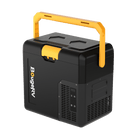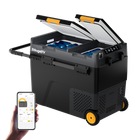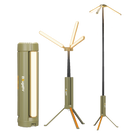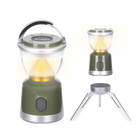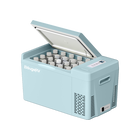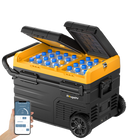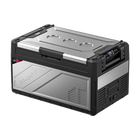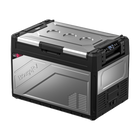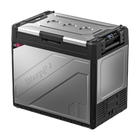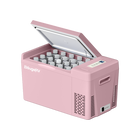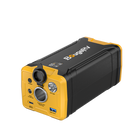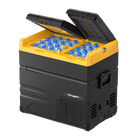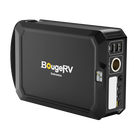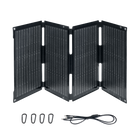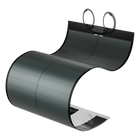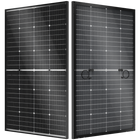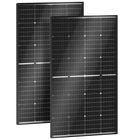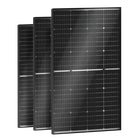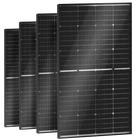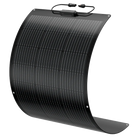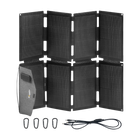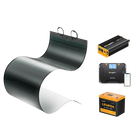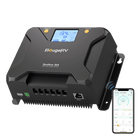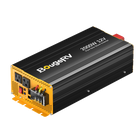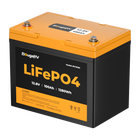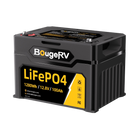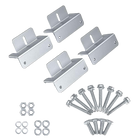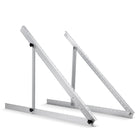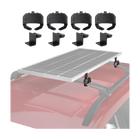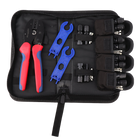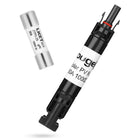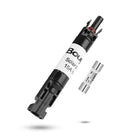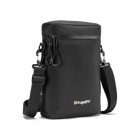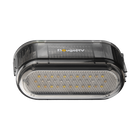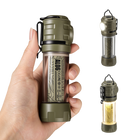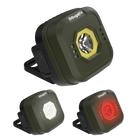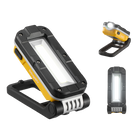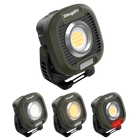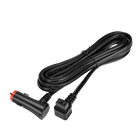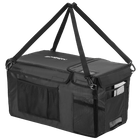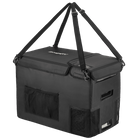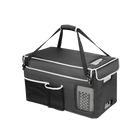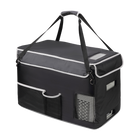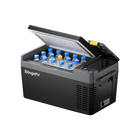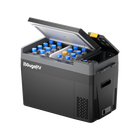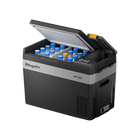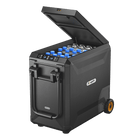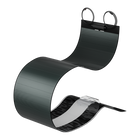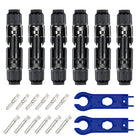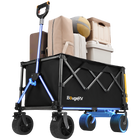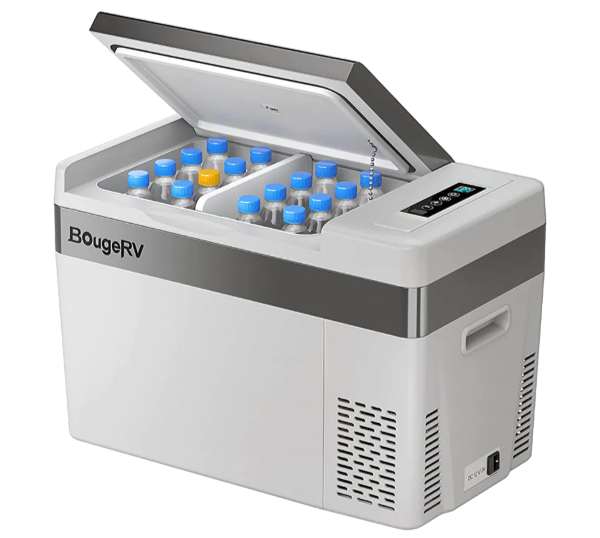How Much Electricity Does a Mini Fridge Use?

Mini fridges are the ideal choice for camping, traveling, overlanding, and RVing when power sources are scarce, helping to keep your food and drinks fresh. They've also become a mainstay in dorm rooms, offices, and even as additional cooling units in homes. These compact appliances provide a convenient way to chill beverages and preserve food without occupying the space or using as much energy as a full-sized refrigerator.
With energy conservation and cost-savings on everyone's mind, it's important to understand how much electricity these small but mighty appliances consume. In this blog post, you will discover how much electricity a mini fridge uses, the associated costs of running one, and the top energy-efficient mini fridges from BougeRV that meet your specific needs!
Let's dive into it!
What Is a Mini Fridge?
A mini fridge is a smaller version of a standard refrigerator, typically ranging in size from 1.7 to 4.5 cubic feet. They are designed to provide a practical solution for spaces where a traditional fridge would be impractical or unnecessary. Despite their size, mini fridges come equipped with similar features to their larger counterparts, including freezer compartments, adjustable shelves, and temperature controls.
So, How Many Watts Does a Mini Fridge Use Typically?

Compared to full-sized refrigerators, which can consume between 100 and 800 watts, mini fridges are relatively energy-efficient and don't use a lot of electricity.
On average, a mini fridge uses between 50 and 100 watts of power and requires 200 to 400 starting watts. However, this can vary based on the model, its size, and the efficiency of the appliance. Energy Star-rated mini fridges, as well as mini fridges with an energy-saving mode, for example, use less energy.
Mini Fridges and Their Eletricity Usage in kWh
|
Estimated kWh Used Per Day |
Estimated kWh Used Per Month |
Estimated kWh Used Per Year |
|
|
50-Watt Mini Fridge |
0.4 kWh/day |
12 kWh/month |
146 kWh/year |
|
60-Watt Mini Fridge |
0.48 kWh/day |
14.4 kWh/month |
175.2 kWh/year |
|
70-Watt Mini Fridge |
0.56 kWh/day |
16.8 kWh/month |
204.4 kWh/year |
|
80-Watt Mini Fridge |
0.64 kWh/day |
19.2 kWh/month |
233.6 kWh/year |
|
90-Watt Mini Fridge |
0.72 kWh/day |
21.6 kWh/month |
262.8 kWh/year |
|
100-Watt Mini Fridge |
0.8 kWh/day |
24 kWh/month |
292 kWh/year |
*Assume the mini fridge runs 8 hours a day.
Calculating Your Mini Fridge’s Electricity Usage
Calculating your mini fridge's electricity usage involves a few straightforward steps. Here are some simple steps to help you determine how much power your mini fridge consumes:
1. Identify the Wattage. Check the mini fridge's manual or the back of the unit for its wattage.
2. Estimate Usage Time. Determine how many hours per day the fridge operates. Mini fridges often run on a cycle, not continuously, so estimate conservatively.
3. Convert to kWh. Electricity usage is typically measured in kilowatt-hours (kWh). To convert the wattage to kWh, divide the wattage by 1,000 and multiply by the number of hours it runs per day.
4. Calculate Daily, Monthly, and Yearly Costs. Multiply the daily kWh by your local electricity rate (found on your utility bill) to find the daily cost. Multiply this by 30 for the monthly cost, or by 365 for the yearly cost.
Let's go through an example to calculate the electricity usage and cost for an 80-watt mini fridge that runs 8 hours a day:
-
Wattage to Kilowatts: 80 watts / 1,000 = 0.08 kW
-
The Amount of Electricity a Mini Fridge Uses per Day: 0.08 kW * 8 hours/day = 0.64 kWh/day
-
The Amount of Electricity a Mini Fridge Uses per Month: 0.64kWh/day * 30 days/month =19.2 kWh/month
-
The Amount of Electricity a Mini Fridge Uses per Year: 0.64 kWh/day * 365 days/year = 233.6 kWh/year
Next, calculate the cost assuming an electricity rate of $0.14 per kWh:
-
Mini Fridge Electricity Cost per Day: 0.64 kWh/day * $0.14/kWh = $0.0896/day
-
Mini Fridge Electricity Cost Per Month: $0.0896/day * 30 days/month = $2.688/month
-
Mini Fridge Electricity Cost Per Year: $0.0896/day * 365 days/year = $32.704/year
In summary, an 80-watt mini fridge uses about 0.64 kWh per day, 19.2 kWh per month, and 233.6 kWh per year, costing roughly $0.0896 daily, $2.688 monthly, and $32.704 annually. As you can see, this mini fridge freezer doesn’t draw a significant amount of electricity.
Please note that these figures are estimates for running your mini fridge. Actual costs can vary depending on the appliance's efficiency, the environment it's in, and how well-stocked it is.
How Much Will a Mini Fridge Raise My Electric Bill, Then?
The precise increase to your electric bill from operating a mini fridge depends on the electricity rate and the efficiency of the mini fridge. For instance, if a mini fridge operates non-stop for 24 hours a day at an average electricity rate of $0.14 per kWh, it costs about $5 to $10 per month. Therefore, you can expect a mini fridge to add approximately $5 to $10 to your monthly bill.
Tips for Cutting Down on Your Mini Fridge’s Energy Consumption
1. Choose an energy-efficient model. Always opt for a mini fridge with a good energy rating. For example, some BougeRV mini fridges use only 0.36 kWh/day when running in ECO mode.
2. Power your mini fridge with solar energy to minimize dependence on traditional energy and cut electricity costs. You'll need a solar panel system, a portable power station for energy storage, and an AC or DC power cord to link the fridge to the power station. BougeRV provides portable solar panels and power stations with enough capacity to run mini fridges and handle their peak wattage requirements.

3. Maintain proper ventilation. Ensure there's enough space around your fridge for air circulation.
4. Keep it full. A well-stocked fridge retains cold better than an empty one, reducing the energy needed to cool new items.
5. Check the seal. Make sure the door seal is tight to prevent cold air from escaping.
6. Regular maintenance. Clean the coils and interior regularly to maintain efficiency.
Is a Mini Fridge Right for You?
If you need additional cooling space or have limited quarters, such as dorm rooms, offices, or home bars, or if you're traveling off-grid with limited power sources and want to save on fuel by reducing the strain on your car battery, a mini fridge is the perfect solution. With this in mind, let's explore the numerous benefits that a mini fridge can offer:
1. Energy Conservation: Traveling off-grid or with limited power sources requires careful energy management. A mini fridge uses minimal electricity, which is ideal for solar setups or small generators and portable power stations commonly used in RVs, overlanding rigs, and campsites.
2. Compact Size: The small fridge offers you essential cooling without taking up too much room, making it especially practical for camping, travel, or mobile living in campers, RVs, cars, and overlanding vehicles.
3. Portable and Durable. These mini fridges are easy to transport in and out of different vehicles or camping setups, making them a versatile option if you frequently transition between various outdoor activities. Additionally, they are built to withstand the bumps and drops of travel.
4. Reduced Fuel Consumption: When traveling by RV or overland vehicle, conserving fuel is just as important as conserving electrical power. A low-wattage fridge means less strain on your alternator and battery.
5. Flexible Power Options: Many mini fridges can run on multiple power sources, such as standard AC, DC from a vehicle battery, or even connected to a portable power station, providing flexibility no matter where you are. If you are frequently on the go or living off-grid, BougeRV’s power stations can be an excellent companion for your mini fridge, providing a portable power source to keep your items chilled wherever you are.
6. Low Noise Operation: The mini fridges operate more quietly, which is crucial for maintaining the peace and serenity of nature that you seek during your escapes into the wilderness.
7. Tailored Cooling Solutions: Whether it's keeping food fresh or beverages cold, a mini fridge provides sufficient cooling capacity.
8. Cost-Effective: These mini fridges are more affordable than built-in refrigeration systems in RVs and overlanding setups. They are also cheaper to run, which helps save money.
Best BougeRV’s Energy-Efficient Mini Fridges
When choosing a mini fridge, brands like BougeRV offer reliable and energy-efficient mini fridges that can cater to different needs. Select a model that fits your lifestyle and intended use.
1. BougeRV Colored Portable Mini Fridges 23 Quart with ECO Mode
- Price: $239.99
- Energy-Saving ECO Mode
- Electricity Used Per Day: Approximately 0.36 kWh to 0.45 kWh
- Can run on 12V/24V DC car power, 110V-240V AC power, a 12V battery, or a portable power station.
- Temperature Range: -7℉ to 50℉ (-22℃ to 10℃)
2. BougeRV 12V Portable Car Fridge 30 Quart with ECO Mode
- Price: $299.99
- Energy-Saving ECO Mode
- Electricity Used Per Day: Approximately 0.36 kWh to 0.45 kWh
- Can run on 12V/24V DC car power, 110V-240V AC power, a 12V battery, or a portable power station.
- Temperature Range: -7.6℉ to 50℉ (-22℃ to 10℃)
3. BougeRV CRPRO30 12V Portable Mini Car Fridge Freezer 30 Quart
- Price: $319.99
- Energy-Saving ECO Mode
- Electricity Used Per Day: Approximately 0.36 kWh to 0.45 kWh
- Can run on 12V/24V DC car power, 110V-240V AC power, or a portable power station.
- Temperature Range: -8°F to 50°F
- Features: Storage Box Design, Interior Light, Safety Tie-down Point, Bottle Opener
4. BougeRV ASPEN 40 PRO 12V Dual-System IceDrive™ Mini Fridge with Wheels 43 Quart
- Price: $509.99
- Energy-Saving ECO Mode
- Rated Power Input: 60W
- Can run on 12V/24V DC car power, 110V-240V AC power, or a portable power station.
- Temperature Range: -4°F to +68°F (-20℃ to +20℃)
- External Battery Design
- Dual-zone refrigerator with IceDrive™ system
5. BougeRV CR45 Portable Fridge Freezer with Wheels 48 Quart
- Price: $469.99
- Energy-Saving ECO Mode
- Electricity Used Per Day: Approximately 0.45 kWh to 1 kWh
- Can run on 12V/24V DC car power, 110V-240V AC power, or a portable power station.
- Temperature Range: -4°F to 68°F (-20℃ to +20℃)
- Dual-zone refrigerator
- APP control
Final Thoughts
In conclusion, while mini fridges are smaller than their full-sized counterparts, they are more energy-efficient, use significantly less electricity, and still contribute to your overall electricity bill.
Understanding their energy consumption can help you make informed decisions about purchasing and usage. By following our tips and carefully considering your needs, you can ensure that your mini fridge usage is both practical and economical. Would you like to upgrade to a more energy-efficient mini fridge? Check out BougeRV's 12V mini fridges with ECO mode!







